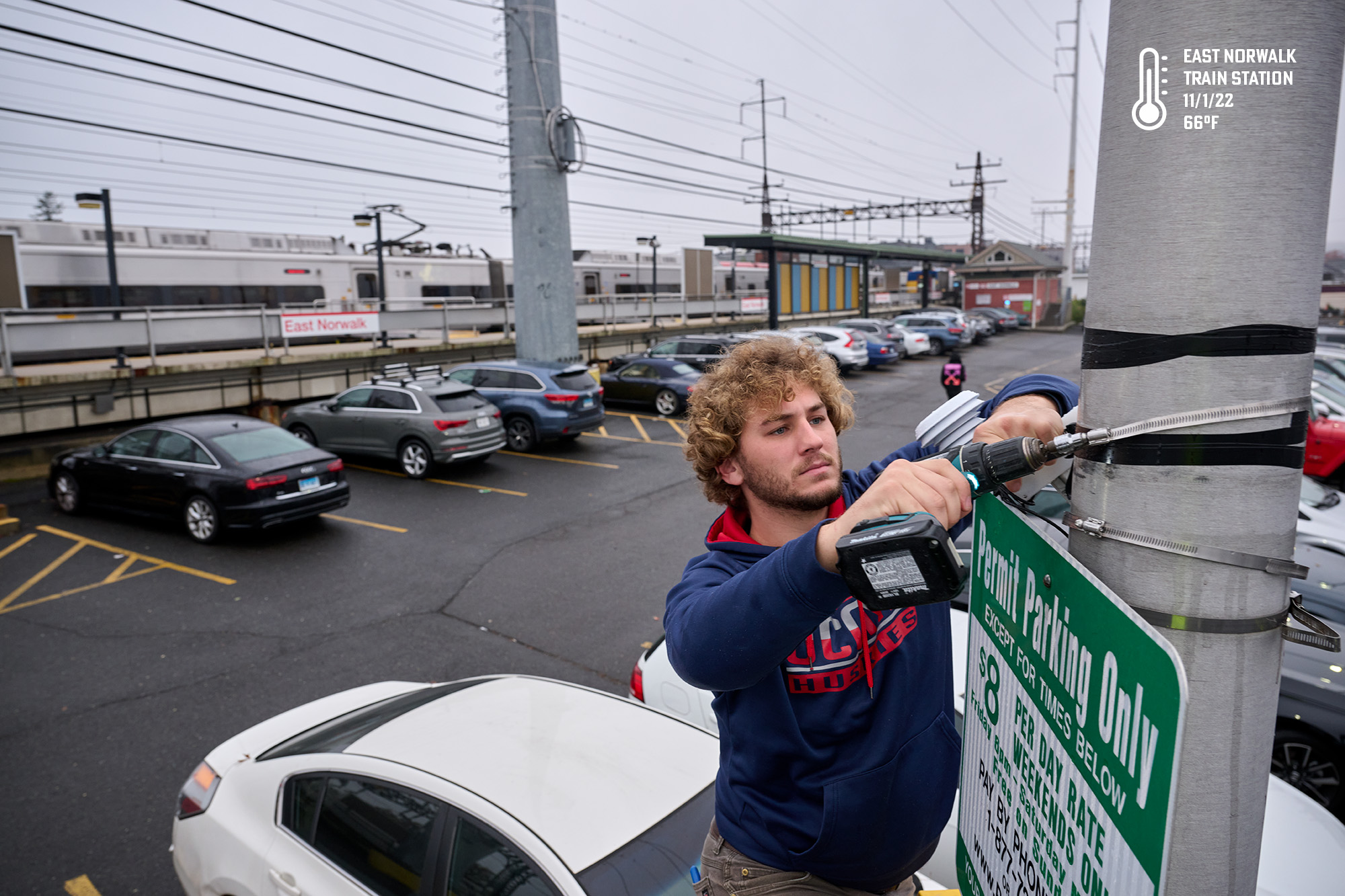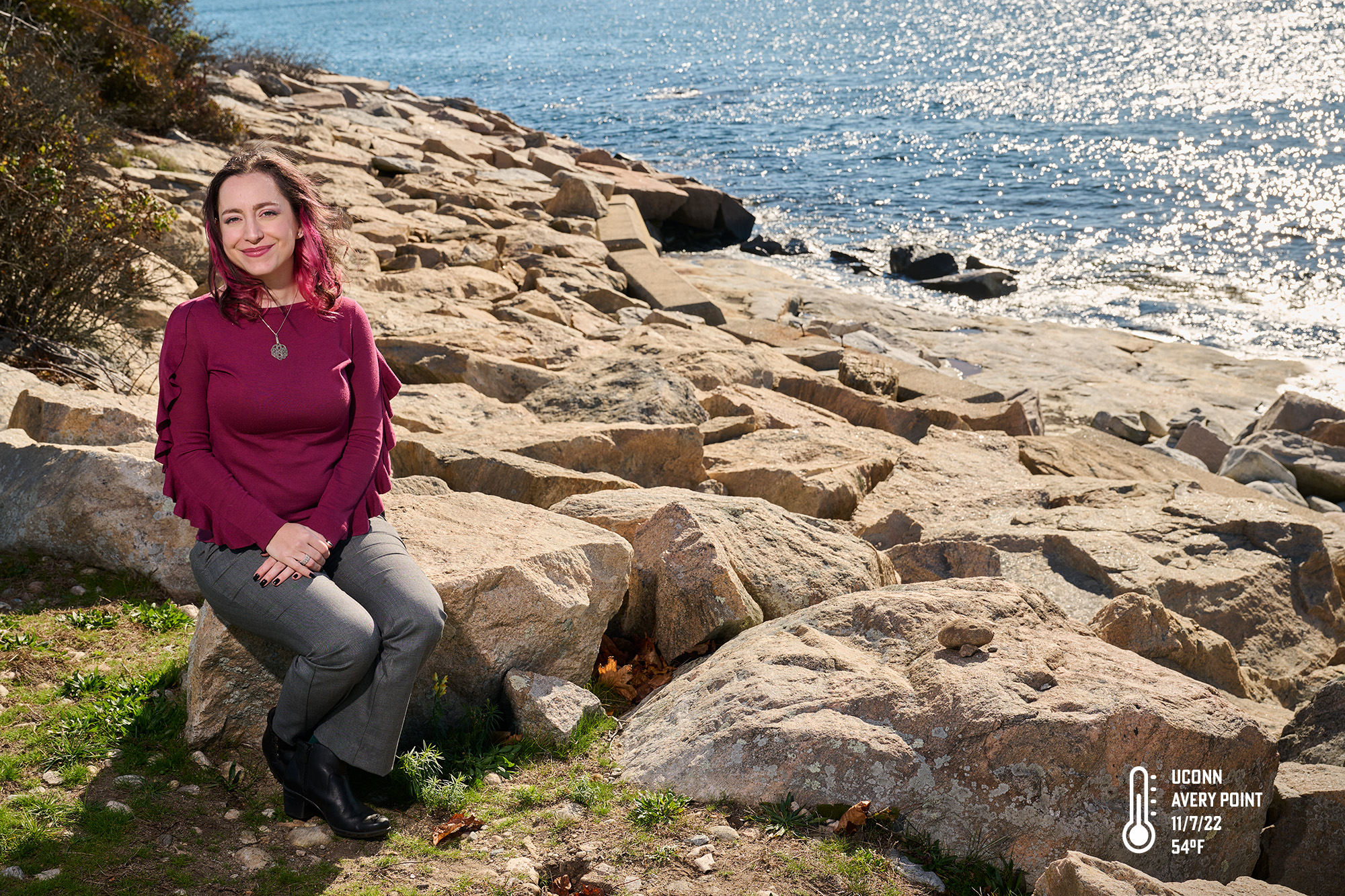
So Hot
One or two degrees of global warming may not sound like much, but these incremental deviations from the mean lead to more frequent and extreme heat waves. City dwellers are especially vulnerable, making excessive heat an environmental justice issue.
By Elaina Hancock
W
e all know how much our surroundings influence the temperatures we experience. A hot, humid day in a bustling city of concrete, glass, and steel feels far more oppressive than the same day spent in a lushly wooded park or on a breezy beach.
On one of the hottest days of the blisteringly hot summer of 2022, locations around the city of Norwalk, Connecticut, saw a range of high temperatures. Calf Pasture Beach, at the shore, hit 96 degrees, while a mile inland, sensors at East Norwalk train station and Naramake Elementary School each clocked a high of 104 degrees.
We all know how much our surroundings influence the temperatures we experience. A hot, humid day in a bustling city of concrete, glass, and steel feels far more oppressive than the same day spent in a lushly wooded park or on a breezy beach.
On one of the hottest days of the blisteringly hot summer of 2022, locations around the city of Norwalk, Connecticut, saw a range of high temperatures. Calf Pasture Beach, at the shore, hit 96 degrees, while a mile inland, sensors at East Norwalk train station and Naramake Elementary School each clocked a high of 104 degrees.
"On a hot day, I'm thinking about multiple aspects," says Yaprak Onat, assistant director of research for CIRCA, the Connecticut Institute for Resilience and Climate Adaptation at UConn Avery Point. "One is how can people cool down if they don't have a place like a cooling shelter or a park? Also, how hot will it be at night? We are relying on the evening to release that heat-related stress, but if you're not getting that relief, that's also a problem."
When nighttime temperatures stay above 91 degrees — called "tropical nights" — emergency rooms see an uptick in conditions like heat stress. After several tropical nights in a row, the trend gets increasingly worse. This most adversely affects people who are older, poorer, and have certain health conditions — they're more vulnerable to the consequences of a warming world and tend to have the fewest resources, says CIRCA executive director James O'Donnell.
By mid-century, Connecticut could see as many as 40 tropical nights per year, quadrupled from the current 10. Nights that spur increasingly oppressive days.
"We've had people walk two miles in 100-degree heat to our office for an appointment" because they need their benefits that badly, says Tania Parrent, supervisor of senior services at Family and Children's Agency in Norwalk. If they had called ahead, the agency would have gotten these senior citizens a ride, but many clients don't call. "We make them sit here and we call an ambulance. We've seen people get really sick. We see it every year," says Parrent.
The homeless and precariously housed population is also at great risk from the heat. Some low-income folks live in their cars and cannot afford to waste gas by running the air conditioning. Many of them are creative about cooling off.
"We know one man, he gets resourceful; finds a cross breeze beneath an underpass by the water, for example," says Parrent. "People also cool off at the park, or at the beach."
Boiling Point
Onat's research is quantifying what people on the street know from experience — it's cooler by the water and in parks. Last spring she and her team of UConn undergraduate and graduate students installed sensors to collect heat, dew point, and humidity data in strategic locations across Norwalk.
"We are trying to identify what the temperature feels like to the human body, and the differences between neighborhoods," says Onat.
These real-time data measurements will help researchers, politicians, and planners determine what needs to be done to build resilience, she says. "We can propose solutions to cities facing specific problems."
It's this ability to present solutions that drew Onat to UConn. Before joining CIRCA, she studied coastal vulnerability in the Hawaiian Islands while pursuing her master's and Ph.D. at the University of Hawaii at Manoa.
"When I saw the [UConn] job posting, I knew it was for me," she says. "I thought, 'they're making big changes by incorporating science and community and state partnership. I want to be a part of that.'"

Carson Hill '21 (CLAS), a marine sciences graduate and CIRCA research assistant, removes some of the sensors CIRCA used to collect heat data in Norwalk through the summer. Established in the wake of Superstorm Sandy in 2012, CIRCA's early focus addressed the state's vulnerable coastline, but other climate change impacts are becoming increasingly apparent, especially for vulnerable communities in urban areas, says executive director James O'Donnell.

Heat is the leading weather-related cause of death in the U.S. and an underappreciated but rapidly growing threat. Based at UConn Avery Point, researcher Yaprak Onat views the problem through a unique lens shaped by her Turkish upbringing and studies in Hawaii.
Onat credits her drive to help build more sustainable and resilient communities to her singular perspective having grown up in Turkey and studied in Hawaii.
"Living in Hawaii gave me great insights on how we should not work against nature but work with it for the community. It is very rooted in Hawaiian culture that nature is there and you are part of it, instead of you owning it, like Western societies see it. You are part of a community, you are part of nature, which pushes me to work on resiliency-related issues."
Indigenous Hawaiians, she says, are representative of marginalized groups who contribute minimally to climate change and yet are among the most vulnerable to its consequences. Learning about them sparked her interest in climate and environmental justice. "It's important to empower these impacted communities to create solutions that truly serve them."
And, while we are seeing the effects of climate change multiply seemingly overnight, adaptation will not happen overnight. Onat says she sees CIRCA working steadily to gain the trust of the Connecticut community through openness and engagement.
"That's also what I saw during my Ph.D. research, engaging with city planners. If I'm not able to inform the community or the planners, then they will just do what they know, the way that they know to do it. There are not going to be informed, science-based decisions and therefore, there is not going to be progress. Now, I have the perfect opportunity to incorporate research with decisions that can change people's lives."
It's all about finding — and funding — solutions.
"I come from a nation that was built from crumbles through working with the community to build prosperity, and in praising science, praising women's leadership, and raising the level of education. I was raised with those values and it has always made me work for what is best for the community; I need to give it back. I think this perspective shaped where I am right now. With climate change issues, it is important to see that you are a part of a big, meaningful world — and you need to work with it.

Leave a Reply